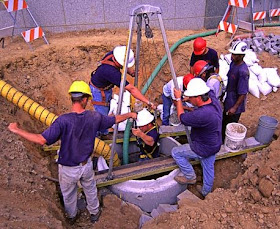On May 1, 2015, Dr. David Michaels, the head of the Occupational Safety and Health Administration (OSHA), and Deputy Secretary of Labor Christopher P. Lu announced the issuance of OSHA’s long-awaited Confined Spaces in Construction standard.
Prior to issuing this new standard, OSHA had one existing provision in its construction standards for a general training requirement applicable to employees working in confined spaces. The new standard was published in the Federal Register on May 4, 2015, and becomes effective on August 3, 2015.
The standard has undergone substantial changes since it was proposed in 2007. Dr. Michaels said that OSHA “listened to our stakeholders” and tailored the rule around their concerns. But OSHA did not listen to all stakeholders; small business representatives asked for a standard similar to the current confined spaces rule for General Industry. OSHA expects the new standard to prevent 780 injuries and 5 fatalities annually.
The new standard has five major differences from the General Industry standard:
A competent person must now evaluate the work site and identify confined spaces, including permit spaces.
Employers must continuously monitor confined space atmospheres, whenever possible. OSHA added this requirement to account for advances in technology and equipment that allow for continuous monitoring of hazards.
Multi-employer construction sites must coordinate their activities in “more detailed provisions,” to avoid the introduction of hazards into a confined space by workers performing tasks outside the space. Prior to an entry operation, the new standard requires the “host employer” and the “controlling contractor” to exchange specific information and in turn, the “host employer” must share the information with the “entry employer.”
For example, the controlling employer should inform the entry employer if employees will be running a generator near the entrance of a confined space, which could cause a buildup of carbon monoxide within the space.
Lookouts or equipment must continually monitor engulfment hazards, such as flash flooding when workers are performing work in a storm sewer. OSHA suggests posting “[a]n electronic sensor or observer posted upstream from the work site” to alert workers in the space at the first sign of flash flooding, giving the workers time to evacuate the space safely.
Employers may now suspend, instead of cancel, a permit, if, for example, entry conditions change or an unexpected event requiring a temporary evacuation of a space occurs. The space must be returned to the entry conditions listed on the permit before re-entry.
Construction industry employers have used the General Industry confined space standard for decades. The new standard requires them to expeditiously upgrade their confined space programs in three months, which leaves them no room for complacency. OSHA is unlikely to allow employers more time for compliance, at least not without near-universal industry outcry.





